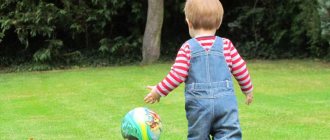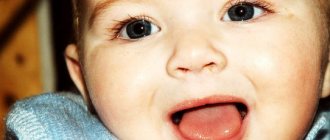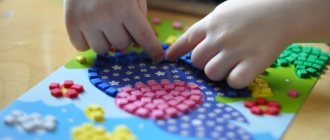Three-year-old children are often called “why kids.” They are interested in everything that happens around them. They often ask questions: how, why, why, what will happen if? The speech of babies is in the developing phase.
But some children experience developmental delays. In order to identify them in time, parents need to understand what a child’s speech is like at 3 years old: the norm of words, the coherence of sentences, sound pronunciation.
What should a 3-year-old child say?
The speech of a three-year-old child continues to actively develop. Closer to the age of four, many children already begin to draw conclusions and reason about the phenomena and objects around them. The baby is interested in communicating with family and strangers.
Many parents want to know what the child’s speech rate is at 3 years old. We must understand that all children are individual in their development. Children of the same age can be at different levels of development of speech abilities.
As a rule, by the end of three years, children come with the following achievements:
- pronunciation of words improves significantly. Speech becomes clearer;
- the baby knows the names of almost all the objects around him (shoes, furniture, clothes, interior parts, toys);
- The child can coordinate words by cases, genders, and numbers. True, he doesn’t always get it right;
- in speech there is an increase in the number of adverbs, prepositions, adjectives, pronouns;
- The baby can memorize short fairy tales and poems and retell them.
If there are no deviations in the child’s development, then he will strive to establish contacts with adults and peers through communication.
There are norms for speech development at three years. The pediatrician takes them into account during the examination of the little patient. The doctor evaluates sound pronunciation, sentence coherence, and vocabulary.
Sound pronunciation
As the child grows, his articulatory apparatus improves. At the age of three, the movements of the tongue, lower jaw and lips become more precise and coordinated.
Thanks to the strengthened tongue, the baby is able to correctly pronounce consonant sounds that were previously softened. Speech becomes more understandable to strangers. For example, if previously a child pronounced “syadik”, “malyako”, now he pronounces these words correctly.
Words with combinations of two consonants (bottle, class, bread), as well as those consisting of 3-5 syllables, begin to come easier.
At the age of three, the following problems with sound pronunciation are often observed:
- replacing hissing sounds with whistling sounds. For example, instead of “hat” the baby says “sapka”, “knife” - “nozik”;
- There are no sounds “r”, “l” in speech . Often children replace them with “v”, “y”, softening the “l”: “fish” is pronounced “liba”, “spoon” - “leader”, “boat” - “yodka”;
- the sounds “ch” and “ts” are not pronounced clearly. For example, the baby says not “chicken”, but “tsyplenok”, not “prince”, but “prints”, not “tea”, but “tai”.
Lexicon
A three-year-old child's active vocabulary almost doubles. If by the age of three he knew about a thousand words, then closer to the age of four this number increases to 2000.
Children love to play with words, rhyme and change them, come up with combinations of sounds (for example, “plyam, slam, glam, tlyam”, “ milk, far, coloko, toloko"). Words that are too long are not pronounced correctly. For example, a child can pronounce “electricity” “petalism”, and instead of “bicycle” - “lisipede”.
There are often cases when children rearrange sounds and syllables, saying not “store”, but “gamazin”, not “first”, but “first”. There are certain difficulties when pronouncing two consecutive consonant sounds: children insert a vowel between them or do not pronounce one consonant. At three years old, children can distinguish objects that are similar in appearance: tiger-lion, mug-cup. They know the names of many animals and can show them in a picture.
When learning new words, three-year-old children establish semantic connections between actions, objects and their names. They also begin to treat the vocabulary of their native language more meaningfully. At the same time, the speech of children at three years old is still imperfect. They often lack words to retell memorable events or long tales.
Connectivity of words and sentences
Three-year-old children do not yet know how to coherently and logically talk about what they saw and what aroused their interest. Difficulties arise with retelling the content of a work of art.
The boys still can’t manage a monologue on a given topic without using leading questions. The statements of three-year-old children are not expanded. Their phrases are simple and often incoherent.
They cannot compose a long, meaningful story from a picture. Instead, they list the objects and actions of the characters seen in the image, while three-year-old children remember and recite nursery rhymes that are understandable and simple in content.
Children at 3 years old are able to retell almost word for word a short fairy tale that they have heard several times. At the same time, some words may be completely incomprehensible to them (for example, tar barrel, bast hut).
How to determine speech delay?
Some children experience delayed speech development. It is important for parents to suspect the presence of a deviation in time. To do this, you need to know the features of speech development in young children. They are shown in the table below.
The formation of speech begins with humming
| Age | Features of speech |
| 1.5-2 months | revelry |
| 4 months | babble |
| 7-8.5 months | babble, repetition of well-produced syllable chains |
| 9-11 months | first words |
| year | knowledge of 10 words |
| 1-2 years | formation of phrasal speech |
| 2-3 years | constructing simple sentences from several words |
| 3-4 years | formation of coherent language |
Common signs of speech delay:
- the baby gurgles a little, babbles, is silent;
- at one year old the baby does not respond to sound;
- At 2 years old, the child does not perform actions at the request of his parents. Cannot string words together into simple phrases;
- at 3 years of age there is no own speech;
- Gestures and facial expressions are used primarily for communication;
- There is profuse salivation, which is not associated with teething.
To eliminate delayed speech development, it is necessary to identify and eliminate the influence of the factor that provoked the appearance of such a problem.
Experts identify the following main reasons:
- intrauterine problems, birth injuries;
- delayed neuropsychic development;
- receiving a traumatic brain injury at an early age;
- hearing problems (deafness, hearing loss);
- psychological disorders;
- lack of communication.
Diagnosis of disorders
You can diagnose speech development with your child at home. There are several tasks for this, based on the results of which you can draw certain conclusions.
- Ask your child to name words from pictures: toys, furniture, animals, seasons.
- Also, using these pictures, ask about the qualities of these items.
- Invite the children to carry out some of your instructions: bring a toy, draw a tree, etc.
- For a grammatical study of speech, ask your child to: change the number of a noun, count objects and pronounce affectionate words using a diminutive suffix.
- In order to determine the level of development of phrasal speech, ask your child to complete your sentence. To make this task easier, you can use pictures with a suitable plot.
What to do if your baby doesn't speak well?
Parents whose children have difficulty speaking at three years old are wondering what to do. Komarovsky notes that if a child of this age has completely incoherent speech, then this is a reason to consult a specialist.
According to the famous pediatrician, when assessing the development of their child, parents should take into account not only vocabulary, but also the dynamics of its replenishment.
Komarovsky believes that if the number of words pronounced at 2 and 3 years does not change, then this is a dangerous trend . If the baby is only 10-20 words behind the standards, then there is no need to worry: after 1-2 months the vocabulary will increase.
Children who have signs of delayed speech development must be examined and shown to a specialist. It is not recommended to give them gadgets as entertainment. For them, live communication will be more useful. Instead of computer games, it is better to offer your son or daughter a walk down the street or reading a book.
Komarovsky does not recommend that parents compare their child with other children. We must remember that each child is a unique individual who develops at his own pace. The task of mom and dad is to help the baby develop.
The reasons for the lack of speech may be more serious
Another important point is the fact that undeveloped speech at the age of 4-5 years may be a manifestation of certain psychological or neurological disorders. This is a reason not only to read books with your child more often, but also to use the help of qualified specialists. Among the causes of speech delay, in addition to physiological lag, mental disorders can also be identified:
- Stress. A strong shock experienced by a child can completely stop the development of speech. Only a specialist can talk to him, and the risk of stuttering due to fear is very high.
- A difficult psychological atmosphere at home can also lead to speech delays.
- Delayed psychomotor and mental development, accordingly, inhibits the formation of speech skills. Therefore, it is extremely important to monitor the child, especially those who speak poorly.
- A separate important point should be highlighted neurological causes as a result of a difficult pregnancy or difficult childbirth, head injuries, or even simply too frequent falls of the child. Experts, based on observations, have concluded that in more than 50% of cases, delayed speech formation is a consequence of MMD (minimal cerebral dysfunction).
Video on the topic
Speech development norms from 0 to 3 years:
Thus, the speech of three-year-old children develops intensively. The vocabulary is replenished, the pronunciation of words and the coherence of sentences improves. There are norms for the development of speech. But they are conditional, since all children are individual in their development.
Parents need to help their child improve speech through special activities conducted in a playful way. If there are signs of developmental delay, you should seek help from specialists.
Ways to develop a child's vocabulary
Read more
When we read a book to a child, he encounters situations and objects with which he has not interacted before and may never encounter them. Let's give an example: a child from central Russia can see a giraffe, a jerboa or a weaver bird only in a zoo, and thanks to reading the book “The Monkey's House” by Boris Zakhoder with good illustrations, he learns about the existence of such animals, their names, habitat and some habits. The child’s horizons will expand, there will be food for his imagination, a new topic for creativity and, of course, his vocabulary will increase.
Wimmelbooks are well suited for developing the vocabulary of young children - books with large, detailed illustrations without text or with a minimal amount of it. They introduce the children to situations that are new to them. For example, with life in a village or in a big city. By looking at picture books with your baby, you can explain unfamiliar concepts and introduce new words. And to remember them better, give your child simple tasks, for example: “Find and show the chicken”, “Who is sitting in the tractor?”, “Who will find the caterpillar first - you or me?”
Talk to your child
It is normal and natural for a child to study the world around him through interaction with adults, through the interpretations that a parent gives to events happening around him. It is important to talk to your son or daughter from birth. If you give your baby a massage or gymnastics, name the parts of his body. If you are walking in the park, list the plants and birds you see. Walking around the city, tell us about cars, houses, construction equipment. Make sure your speech is varied: use synonyms, speak in common sentences. Emotional mood is also important: show the feelings you experience. It's great if your baby has the opportunity to touch, smell or even lick a new object, although this is not always appropriate.
Play games
Children learn about the world through play, so the easiest way to teach them something is through play. There are several ways to expand your child's vocabulary in a fun way.
1. Edible-inedible
. A game familiar to everyone: the leader throws the ball and names the object. If it is something edible, the ball needs to be caught. If it’s the other way around, beat it off. The one who makes a mistake becomes water. By the way, this game can be played in different ways: for example, calling living and nonliving, or warm and cold.
2. Who will remember more?
This game is convenient to play on the way to kindergarten. Determine the category for which you will select words, for example, “Animals”. Take turns coming up with suitable words with your child. Whoever fails to pick loses. By the way, if you help your child a little and let him win, he will be inspired.
3. Describe the thing
. A version of the game “Crocodile” for the little ones: let the child describe any thing from the environment, and you guess it. Then you can switch roles.
4. Analogies
. Invite your child to continue a phrase like this: “A T-shirt is clothes, a shoe is ...”
5. Cheerful family
. The host throws the ball to everyone in turn. First, with each throw, he names variant names. If the name suits the player, the ball must be caught. At some point, the water throws the ball and says “Family” or “Merry Family”. If a participant catches such a ball, he will be able to come up with a name for himself. But if he misses it, the right to choose will go to the water. After the name, choose a middle name, last name, place of residence, profession, pet, husband or wife.
6. Say the opposite
. One of the participants names a word, and the other must choose an antonym for it: day - night, wet - dry, etc.
7. What does it mean?
A good way to remember new words. The adult calls a word unfamiliar to the child (for example, “reptile”) and offers options for its meaning. The child’s task is to choose the correct option.
8. True or not?
“Sharks walk on the earth”, “Cubic sun”, “Chickens are bigger than dogs”: offer your child options for true and false statements, and he will rejoice when he finds mistakes.
It is easier for a child with a rich vocabulary to learn and communicate more easily with adults and other children. The task of parents is to help him realize his natural potential, including developing competent speech and perception of information in oral and written form.











